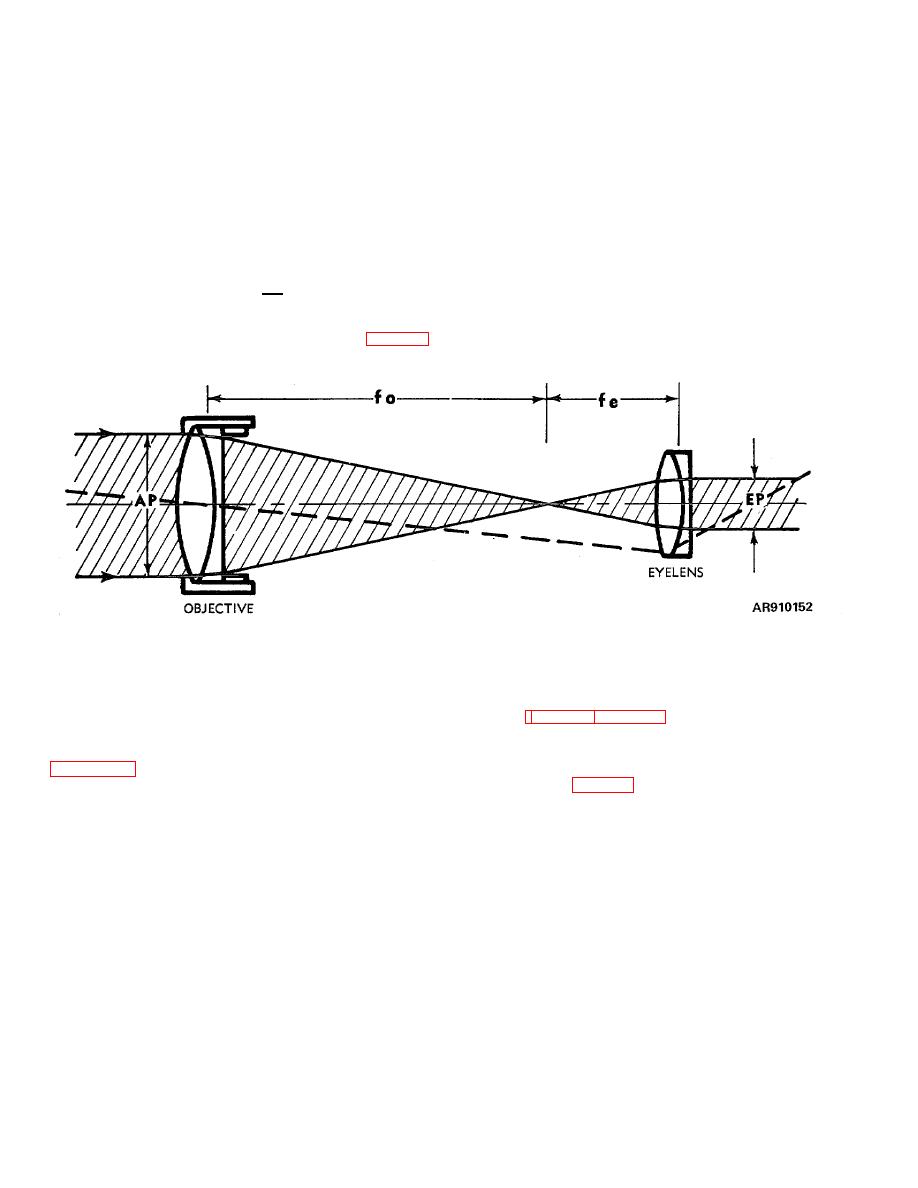 |
|||
|
|
|||
|
Page Title:
Section VII. OPTICAL FACTORS IN TELESCOPE DESIGN |
|
||
| ||||||||||
|
|
 TM 9-258
exists. Also, the negative eyelens alone would minify the
simultaneously with the same accommodation. Although
reticle and require eye accommodation to focus on it so
this system is of basic optical interest, it has no practical
that it would be impossible to see both field and reticle
military application in this country.
Section VII. OPTICAL FACTORS IN TELESCOPE DESIGN
This formula is applicable to all types of telescopes.
5-21. Magnification or Power of Telescope. Power
in a telescope can be determined by dividing the
NOTE
diameter of the entrance pupil by the diameter of the exit
Power in optical instruments is denoted
pupil.
by the letter x. For example, a 6 x 30
Power = AP
EP
binocular is 6-power and has an
where AP is the diameter or aperture of the entrance
entrance pupil or objective size of 30
pupil and EP is the diameter of the exit pupil (fig 5-24).
millimeters.
Figure 5-24. Entrance and exit pupils.
5-22.
Entrance Pupil.
5-23.
Exit Pupil.
a. Function. The entrance pupil diameter is
a. Location. The diameter of the bundle of
limited by the clear aperture diameter of the objective
light (figs 5-24 and 5-25) leaving an optical system is
determined by the size of the exit pupil. If an instrument
lens. This clear aperture is limited by the inside diameter
is held at arm's length, the exit pupil is seen as a virtual
of either the lens cell or the retaining ring as indicated in
image of the aperture stop and will appear as a bright
disk of light (fig 5-25). The position of the exit pupil can
from the objective end of the instrument.
b. Measurement. The entrance pupil can be
be determined by directing the telescope towards an
illuminated area, such as the sky, and by holding a piece
approximated by measuring directly across the objective
of translucent paper or ground glass behind the eyepiece
with a transparent metric scale. Usually the above
in the place where the emergent beam is smallest and
method is sufficiently accurate for most practical
most clearly defined. This disk of light formed at the exit
purposes.
pupil is called the eye circle or Ramsden circle.
5-13
|
|
Privacy Statement - Press Release - Copyright Information. - Contact Us |